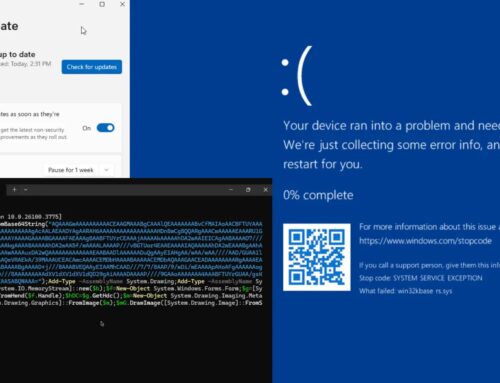
New Banking Malware DoubleTrouble Attacking Users Via Phishing Sites To Steal Banking Credentials
Unmasking DoubleTrouble: The Emerging Threat to Mobile Banking Security
In the relentless landscape of cyber threats, a sophisticated new banking trojan, aptly named DoubleTrouble, has materialized, targeting mobile users across Europe. This malware represents a significant escalation in tactics, employing advanced evasion techniques and expanding its reach through insidious new distribution channels. For cybersecurity professionals, understanding DoubleTrouble’s modus operandi is crucial for bolstering defenses against this rapidly evolving menace.
DoubleTrouble’s Deceptive Entry: Phishing and Bogus Websites
Initial vectors for DoubleTrouble’s dissemination primarily involved highly convincing phishing websites. These sites meticulously mimicked the legitimate online platforms of prominent European banking institutions, luring unsuspecting users into revealing their sensitive banking credentials. The cunning nature of these phishing campaigns made them remarkably effective, exploiting trust and urgency to compromise user accounts.
More recently, DoubleTrouble’s distribution strategy has evolved. Threat actors are now leveraging bogus websites designed to directly host malicious samples. This shift bypasses the need for the user to actively input credentials into a fake form, instead focusing on enticing them to download and install the malware directly. This represents a more aggressive and potentially broader attack surface, making detection by traditional means more challenging.
Advanced Evasion Techniques Employed by DoubleTrouble
While the initial source content doesn’t detail specific CVEs related to DoubleTrouble’s evasion techniques, its categorization as a “sophisticated” threat implies the use of methodologies designed to bypass standard security measures. Common evasion techniques employed by advanced banking Trojans include:
- Runtime Analysis Evasion: Detecting virtual environments, debuggers, or sandboxes and altering behavior to avoid analysis.
- Code Obfuscation: Encrypting or scrambling its code to make reverse engineering and static analysis difficult for security researchers.
- Anti-VM and Anti-Emulator Checks: Probes to determine if it is running on a virtual machine or emulator, refusing to execute if detected.
- Dropper/Loader Mechanisms: Using a small, benign-looking dropper to fetch the full malicious payload from a remote server, making initial detection harder.
The Peril of Stolen Banking Credentials
The primary objective of DoubleTrouble is the exfiltration of banking credentials. Once compromised, these credentials grant attackers unauthorized access to victims’ financial accounts, leading to a multitude of potential damages:
- Direct Financial Theft: Funds can be drained from accounts, or unauthorized transactions can be performed.
- Identity Theft: Stolen banking information often contains enough data to facilitate broader identity theft schemes.
- Account Takeovers: Attackers can gain complete control over bank accounts, changing passwords and contact information.
- Further Fraud: Compromised accounts can be used as launching pads for future phishing or moneylaundering operations.
Remediation Actions and Proactive Defenses
Mitigating the threat posed by DoubleTrouble requires a multi-layered approach, combining user awareness with robust technical controls. For individuals and organizations, the following actions are paramount:
- Educate Users on Phishing: Regular training on identifying phishing attempts, including scrutinizing sender addresses, URL integrity, and suspicious requests, is critical. Emphasize the importance of never clicking on unsolicited links.
- Verify Website Authenticity: Always type banking institution URLs directly into the browser or use official mobile banking applications. Never rely on links from emails or text messages. Look for “HTTPS” and a padlock icon in the URL bar.
- Enable Multi-Factor Authentication (MFA): Implement MFA for all banking and critical online accounts. Even if credentials are stolen, MFA provides an additional layer of security.
- Keep Software Updated: Ensure operating systems, web browsers, and all security software (antivirus, anti-malware) are consistently updated to their latest versions. These updates often include patches for newly discovered vulnerabilities.
- Exercise Caution with Downloads: Only download applications from official app stores (Google Play Store, Apple App Store). Be wary of prompts to download applications from untrusted sources, even if they appear to be legitimate.
- Utilize Reputable Security Software: Deploy comprehensive mobile security solutions that include real-time malware detection and phishing protection. Regularly scan devices for malicious activity.
- Regularly Monitor Bank Statements: Promptly review bank and credit card statements for any unauthorized transactions and report suspicious activity immediately.
Tools for Detection and Prevention
Leveraging appropriate tools is essential for detecting and preventing threats like DoubleTrouble. The following table outlines categories of relevant cybersecurity tools:
| Tool Category | Purpose | Examples/Approach |
|---|---|---|
| Endpoint Detection & Response (EDR) | Real-time monitoring and analysis of endpoint activity to detect and respond to threats. | CrowdStrike Falcon, SentinelOne, Microsoft Defender for Endpoint |
| Mobile Threat Defense (MTD) | Protects mobile devices from malware, phishing, and network-based attacks. | Zimperium, Lookout, Check Point Harmony Mobile |
| Secure Web Gateways (SWG) | Filters internet traffic to prevent access to malicious websites and block malware downloads. | Zscaler, Symantec SWG, Cisco Secure Web Appliance |
| Phishing Simulation & Training | Tests employee susceptibility to phishing and provides educational modules. | KnowBe4, Cofense, PhishER |
| DNS Filtering Solutions | Blocks access to known malicious domains, including C2 servers and phishing sites. | Cisco Umbrella, Cloudflare DNS, Quad9 |
Protecting Against Evolving Mobile Banking Threats
DoubleTrouble represents a clear evolution in mobile banking malware, shifting from purely phishing-based credential harvesting to direct malware distribution via bogus websites. This adaptability underscores the critical need for continuous vigilance and proactive security measures. For cybersecurity analysts and IT professionals, staying informed about these threat actor shifts and implementing robust, multi-layered defenses are essential to safeguarding financial data and user trust.





